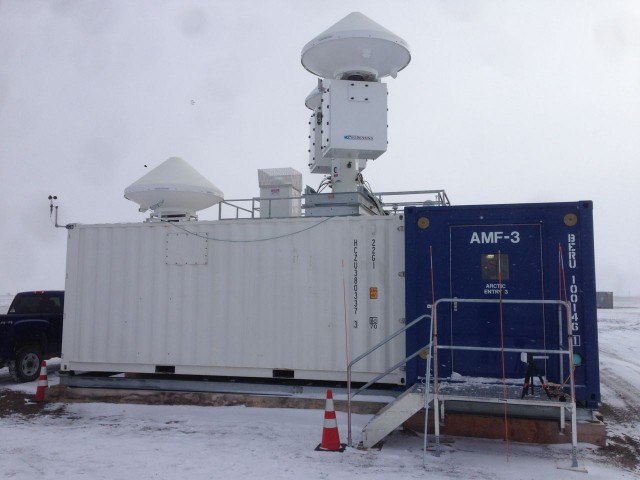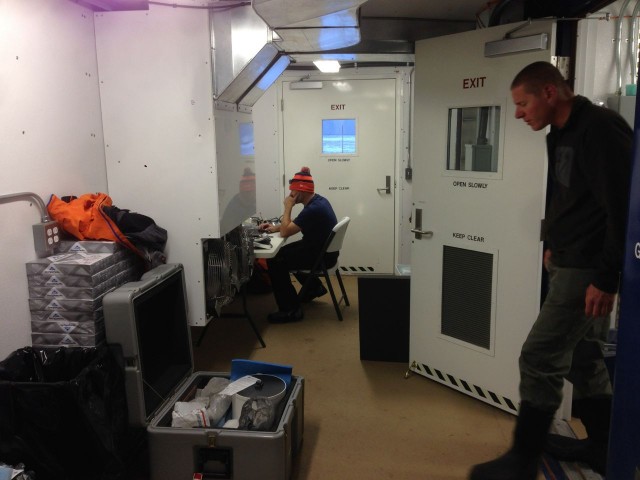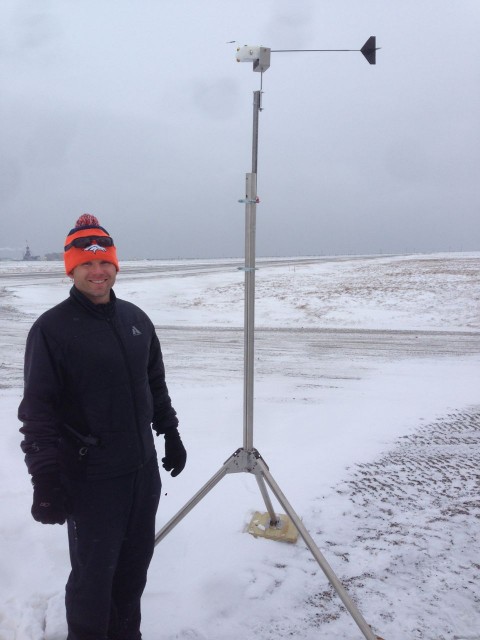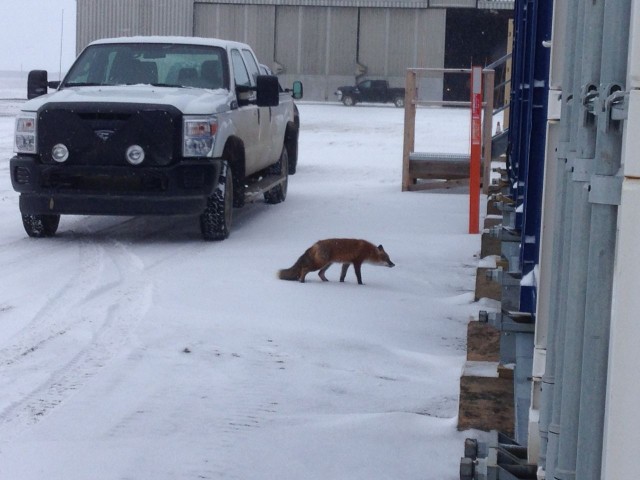We spent today unpacking our crates, making sure that everything was in working order and setting up our ground station. The DOE ARM program has their third Mobile Facility (AMF3) set up here at Oliktok Point, and in addition to all of the instrumentation that is included with that facility there is some space for visiting scientists to operate their equipment. What that means for us is that we have shelter from the harsh Arctic environment, as well as a pretty nice area in which to do our work including tools, workbenches etc.
The aircraft that we are operating up here is pretty neat. In short, it is a small (1 meter wingspan), lightweight (~700 g), inexpensive (~$2000) plane that makes measurements of temperature, humidity, pressure and estimates wind speed. Designed by Professor Dale Lawrence in the University of Colorado Aerospace Engineering Department, the DataHawk has been deployed in several locations around the world. The aircraft is capable of flying autonomously from launch to landing, with an onboard autopilot and flight planning software doing the navigation. However, for safety reasons, it is important to have a pilot and an observer present when the aircraft is in the sky.
Unfortunately, with the small size and light weight of the DataHawk comes the tradeoff that high winds can ground this aircraft pretty easily. While the DataHawk is capable of flying at 15-18 meters per second relative to the surrounding air, sustained winds exceeding 8-10 meters per second make for somewhat dicey flying. After getting everything set up, we sat at that threshold all afternoon and in the end decided that we’d wait to conduct our first flight until tomorrow, when winds are forecast to decrease somewhat. In addition to two DataHawks, we also brought a windvane carrying one of the DataHawk sensor packages so that we can do some direct comparison with more traditional instrumentation and carry out this comparison in windy conditions. This windvane will sit on top of a 2-meter tall tower together with other instruments during the COALA campaign. We did operate the wind vane for an extended time period today, and quickly found out that wind and snow will do a number on our cold-wire temperature sensors. These sensors include two very (6 micron) thin wires, and despite their protective shroud, these wires are no match for snowflakes moving sideways in the wind. Fortunately, Jack and I learned how to replace these delicate items before leaving Boulder, and since we were not able to fly, completed the repairs before heading back to the Air Force facility for the evening.

A view towards the Beaufort Sea from the AMF3. A combination of wind (note the horizontal wind sock), overcast skies and snow made today not suitable for flying.
Finally, our first day out at the facility did produce some wildlife encounters. No bears (fortunately), but we did see a bunch of caribou from a distance, and had a very curious Arctic fox exploring the area around the AMF3. We’re looking forward to flying tomorrow – hopefully the weather cooperates.





